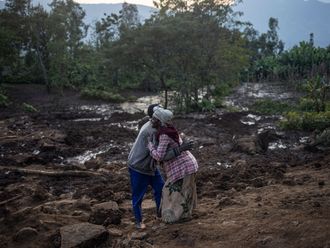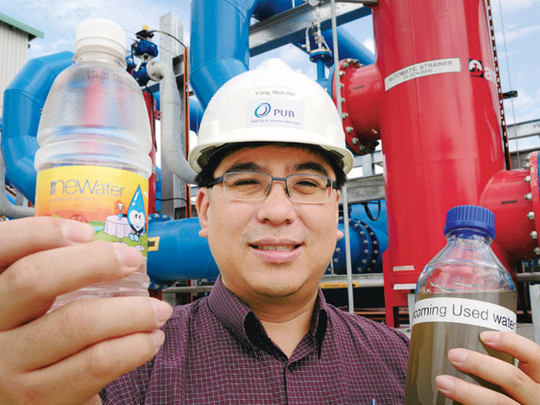
There may be no finer illustration of the adage ‘necessity is the mother of invention' than in Singapore's achievements in the water technology sector. The city-state, with its combinationof a large urban population and a small territory with limited natural resources, has, not surprisingly, prioritised a viable approachto securing water resources.
Leong Teng Chau, divisional director for environment and engineering services, International Enterprise (IE) Singapore, says that the Singapore model takes "a long-term integrated approach, [with] careful consideration [to] not only the price factor but, more importantly, [to] efficiency and sustainability".The Singapore International Water Week coming up in June — bringing together policymakers, industry leaders, experts and practitioners from the world over to address the sector's issues and showcase technologies — highlights Singapore's position as a "global hydrohub".
The domestic pressure for the sector's growth is daunting, with a committed strategic approach in response. Without natural freshwater lakes, Singapore is dependent on four sources, known as the Four National Taps: water from catchment areas, imported water, recycled water and desalinated water. The first two sources currently meet roughly 60 per cent of the demand, with recycled and desalinated water accounting for 30 per cent and 10 per cent, respectively.
Catchment areas have been greatly increased in recent years, most notably in 2008 with the construction of Marina Bay reservoir, which has increased the rainfall catchment to two-thirdsof the country's surface area, from one half.Two further reservoirs, Punggol and Serangoon, are being constructed.
Recycling water
Historically, Singapore has relied on imported water from Malaysia to meet 50 per cent of its needs. But that ratio is gradually being reduced, with the goal eventually of self-sufficiency (by the time the agreement with Malaysia expires in 2061), by way of technological advances. An expertise is thereby developing that makes Singapore a global leader in the internationally high-growth water sector.
The recycling of water, producing the brand-named NEWater, began in 2003. The process itself involves the purification of wastewater using dual-membrane (via microfiltration and reverse osmosis) and ultraviolet technologies — in addition to conventional water treatment processes — into water for commercial and industrial use as well as for humanconsumption. It's an impressive displayof scientific advancement.
This month, Singapore's fifth and largest > NEWater plant has opened; it's a joint venture between Singapore's leading water management company, Sembcorp Industries (controlled by state investment company Temasek Holdings), and the national water agency, PUB. This system will meet 30 per cent of Singapore's total water demand, doubling from 15 per cent previously. By 2020, it is expected to cover 40 per centof Singapore's total water needs.
Economically viable
Lastly, desalination meets 10 per cent of the city-state's needs, following the opening of the first plant in 2005. At the recent openingof the NEWater plant, Goh Chok Tong, a senior minister, said that of the two methods NEWater and desalination, "NEWater, which recycles water, is more economical. By enabling the use of every drop of fresh water more than once, it has multiplied potential water supply, hence helping to mitigate the effects of periods of extended dry spells."
Leong says that the country has "leveraged private sector expertise and worked through a public-private-partnership approach", leading to customised, integrated solutions.
Having developed the technology to meet the domestic requirement, Singapore's companies are rapidly exporting the expertise. Leong advises proudly that their services "cut across the entire water value chain, including industrial wastewater recycling capabilities, wastewater treatment and desalination".
According to IE Singapore, since 2006, Singaporean companies have clinched more than 100 water-related projects, globally worth more than 7.7 billion Singapore dollars (about Dh20.40 billion). Other Singapore-based companies such as Boustead Salcon Water Solutions, Darco Water Technologies Limited, Dayen Environment Ltd. and United Engineers, have successfully gone forth with ‘unique selling points of being solutions-based, cost-effective and reliable system integrators', according to the promotional literature, to gain access overseas. Consultancy companies such as CPG Consultants have also made inroads abroad.
The United Nations has estimated that a quarter of the world's population will lack sufficient drinking water by 2050. That'sa stark prospect and one needing a quick remedy. Singapore is therefore a pioneerin addressing what has become a seriousissue for the world.
Helping the UAE
The UAE shares key characteristics with Singapore in terms of rapidly expanding urban populations and scarcity of natural water resources. It is therefore not surprising that Singaporean companies have been actively seeking out business opportunities in this region.
One of the most significant projects undertaken has been Sembcorp Utilities' desalination project in Abu Dhabi. In 2006, Sembcorp invested $1.7 billion to acquire a 40 per cent stake in a Fujairah-based independent water and power plant. Its partner in the project was the Abu Dhabi Water and Electricity Authority (ADWEA), which holds 60 per cent majority in the joint venture.
Last year, Sembcorp celebrated the successful completion of an expansion to this plant. At 100 million imperial gallons per day, the desalination capabilities of this plant make it one of the world's largest.
Sembcorp Utilities is also responsible for the plant's operations under an operation and maintenance agreement.


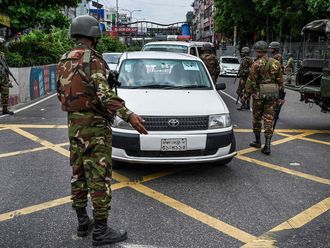
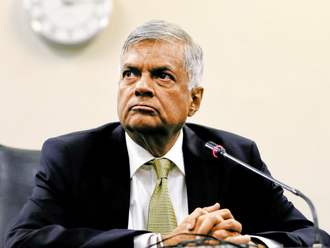

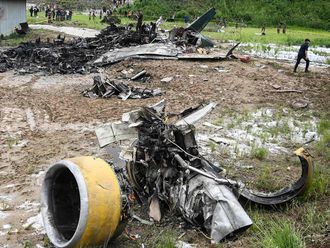


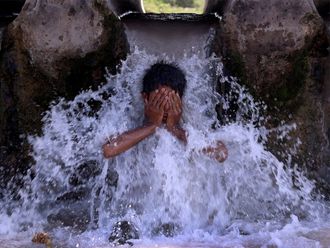

_resources1_16a30b3523c_small.jpg)
